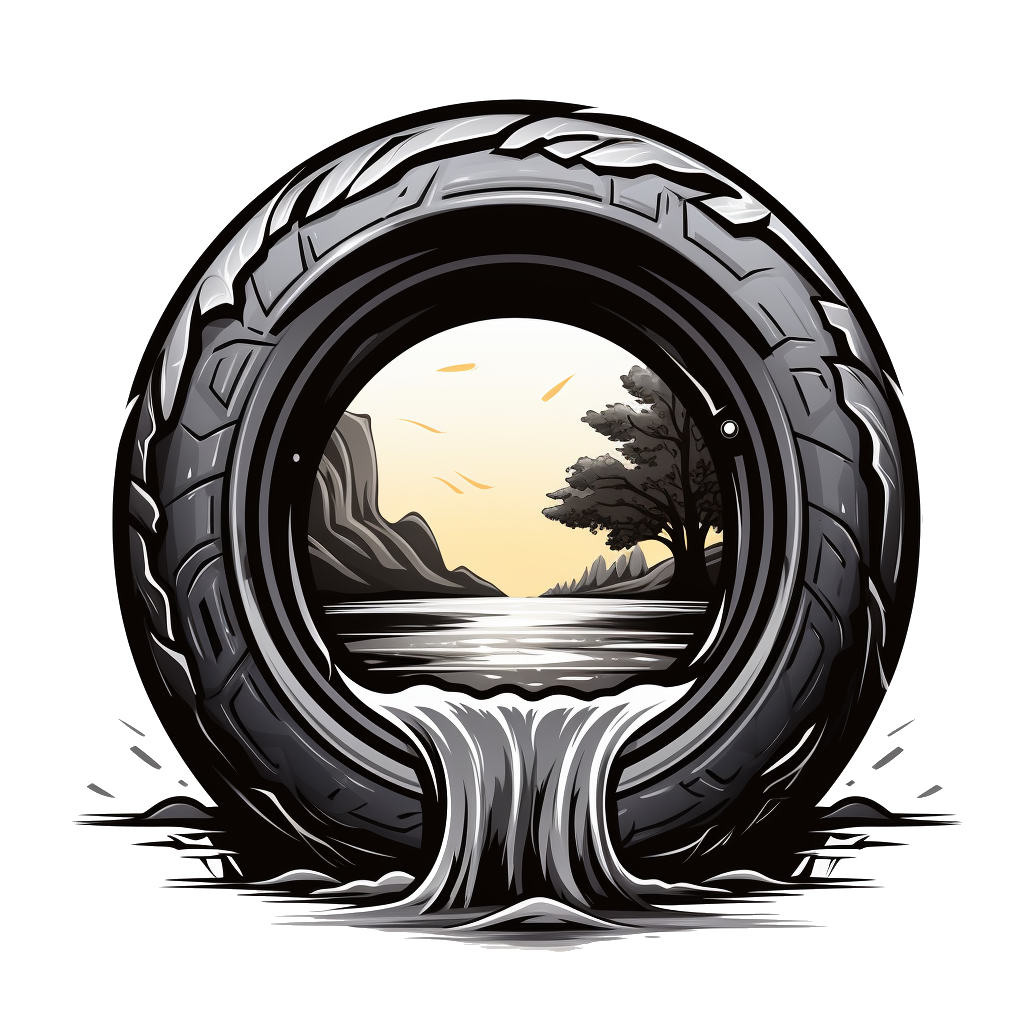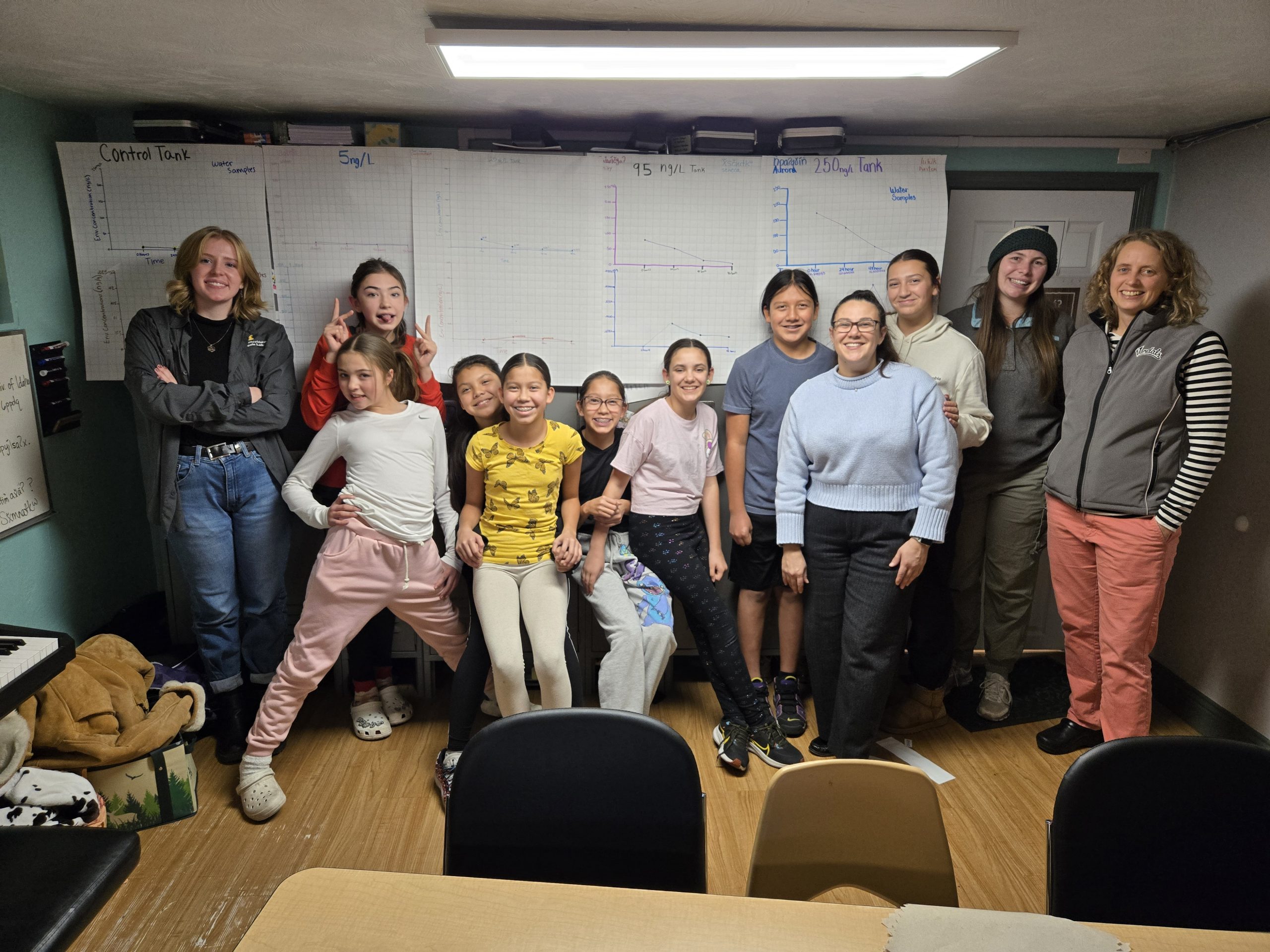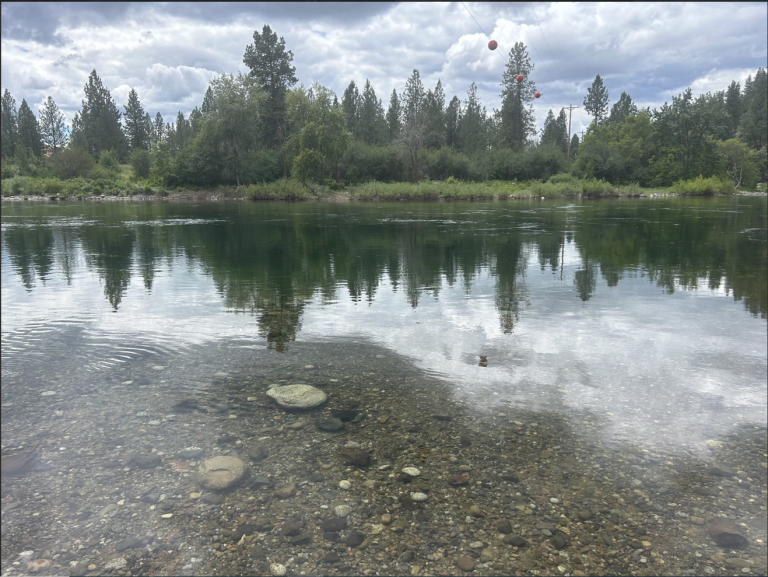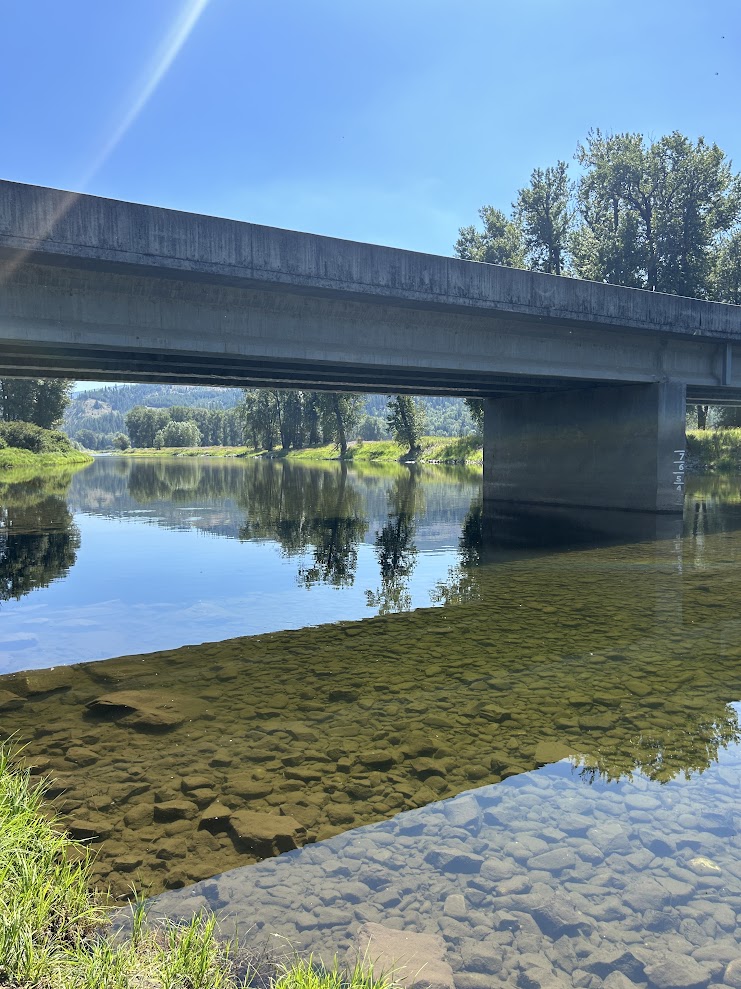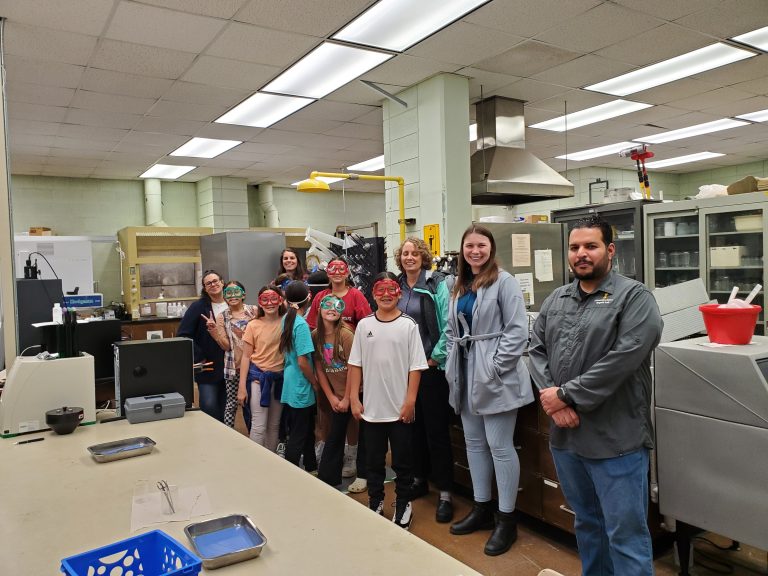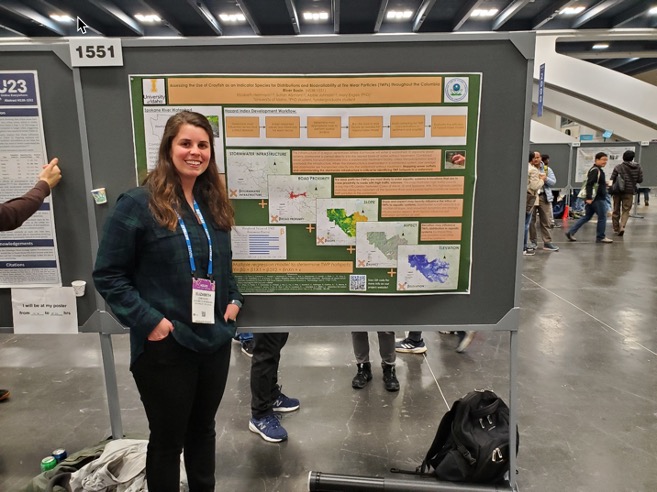Exploring Crayfish, Pollution, and Science Communication with the Salish School of Spokane
On November 7th, three members of our research team had the incredible opportunity to visit the Salish School of Spokane (SSS) and work directly with students on a hands-on science lesson tied to our ongoing research. This collaboration was more than just a visit—it was a chance to connect students with real-world environmental science and data analysis in an interactive and meaningful way.
The students began by making predictions about how crayfish might respond to exposure to 6PPD-Q, a toxic compound found in tire wear particles. Using real data from our latest laboratory experiments, the students plotted results, compared outcomes to their predictions, and engaged in thoughtful discussions about what the data revealed.
Working in pairs, they practiced graphing data from individual tank experiments, then combined their results to analyze a larger dataset. This exercise not only strengthened their graphing and critical thinking skills but also gave them a glimpse into how scientists interpret patterns and draw conclusions from complex data.
The lesson built on the students’ previous field trip to the University of Idaho’s Moscow campus, where they explored crayfish anatomy, food web dynamics, and the role of crayfish as indicators of environmental pollutants like 6PPD-Q.
Adding even more depth to the day’s learning, undergraduate Abbie Johnson created three mini-lessons to expand the students’ understanding of stormwater pollution. In small rotating groups, students learned about how soils can filter contaminants, the significance of riparian buffer zones, and how environmental issues can be effectively communicated to the public.
We left Spokane inspired by the curiosity and enthusiasm of the students at SSS. Their questions, insights, and engagement reaffirmed the importance of connecting research with education and empowering the next generation of environmental stewards.
